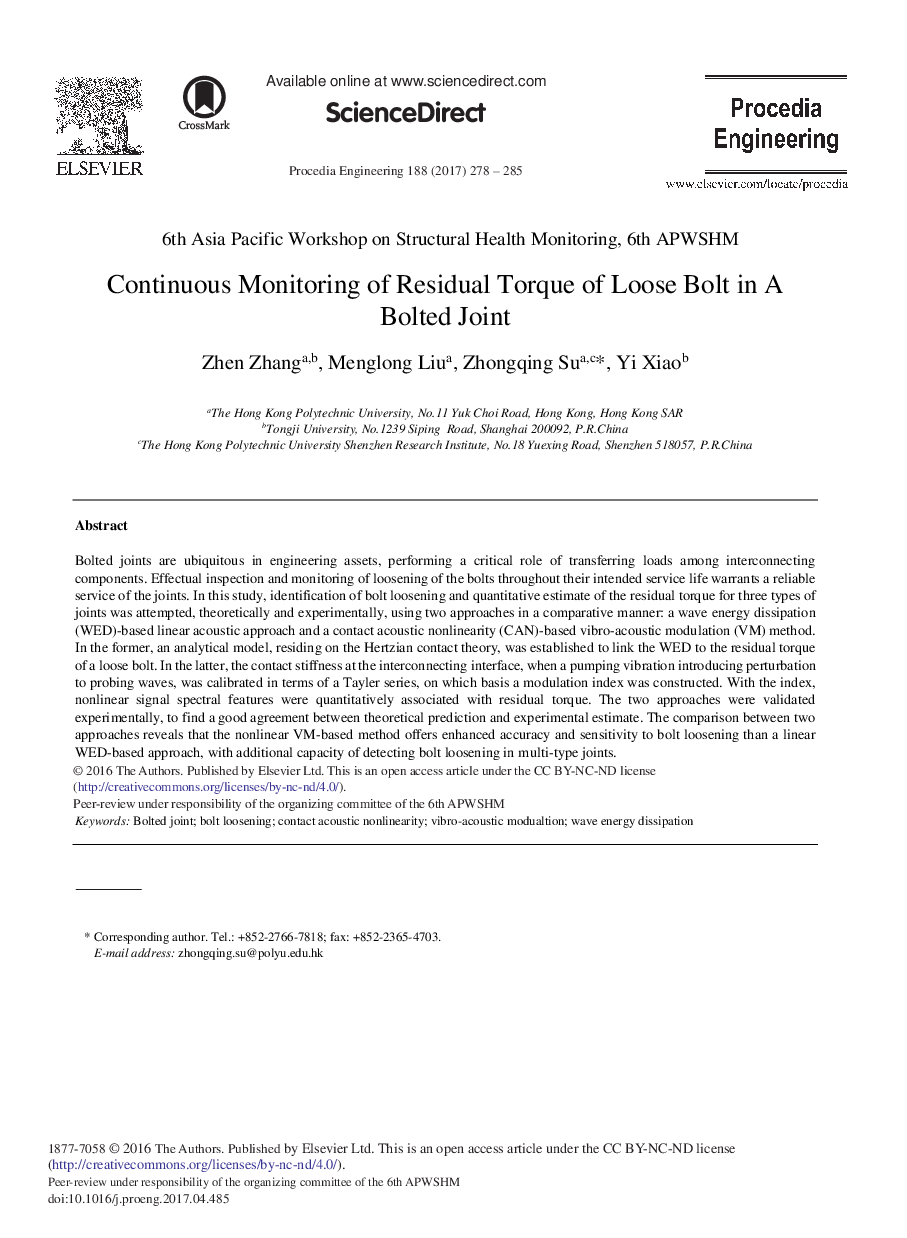| Article ID | Journal | Published Year | Pages | File Type |
|---|---|---|---|---|
| 5027814 | Procedia Engineering | 2017 | 8 Pages |
Bolted joints are ubiquitous in engineering assets, performing a critical role of transferring loads among interconnecting components. Effectual inspection and monitoring of loosening of the bolts throughout their intended service life warrants a reliable service of the joints. In this study, identification of bolt loosening and quantitative estimate of the residual torque for three types of joints was attempted, theoretically and experimentally, using two approaches in a comparative manner: a wave energy dissipation (WED)-based linear acoustic approach and a contact acoustic nonlinearity (CAN)-based vibro-acoustic modulation (VM) method. In the former, an analytical model, residing on the Hertzian contact theory, was established to link the WED to the residual torque of a loose bolt. In the latter, the contact stiffness at the interconnecting interface, when a pumping vibration introducing perturbation to probing waves, was calibrated in terms of a Tayler series, on which basis a modulation index was constructed. With the index, nonlinear signal spectral features were quantitatively associated with residual torque. The two approaches were validated experimentally, to find a good agreement between theoretical prediction and experimental estimate. The comparison between two approaches reveals that the nonlinear VM-based method offers enhanced accuracy and sensitivity to bolt loosening than a linear WED-based approach, with additional capacity of detecting bolt loosening in multi-type joints.
